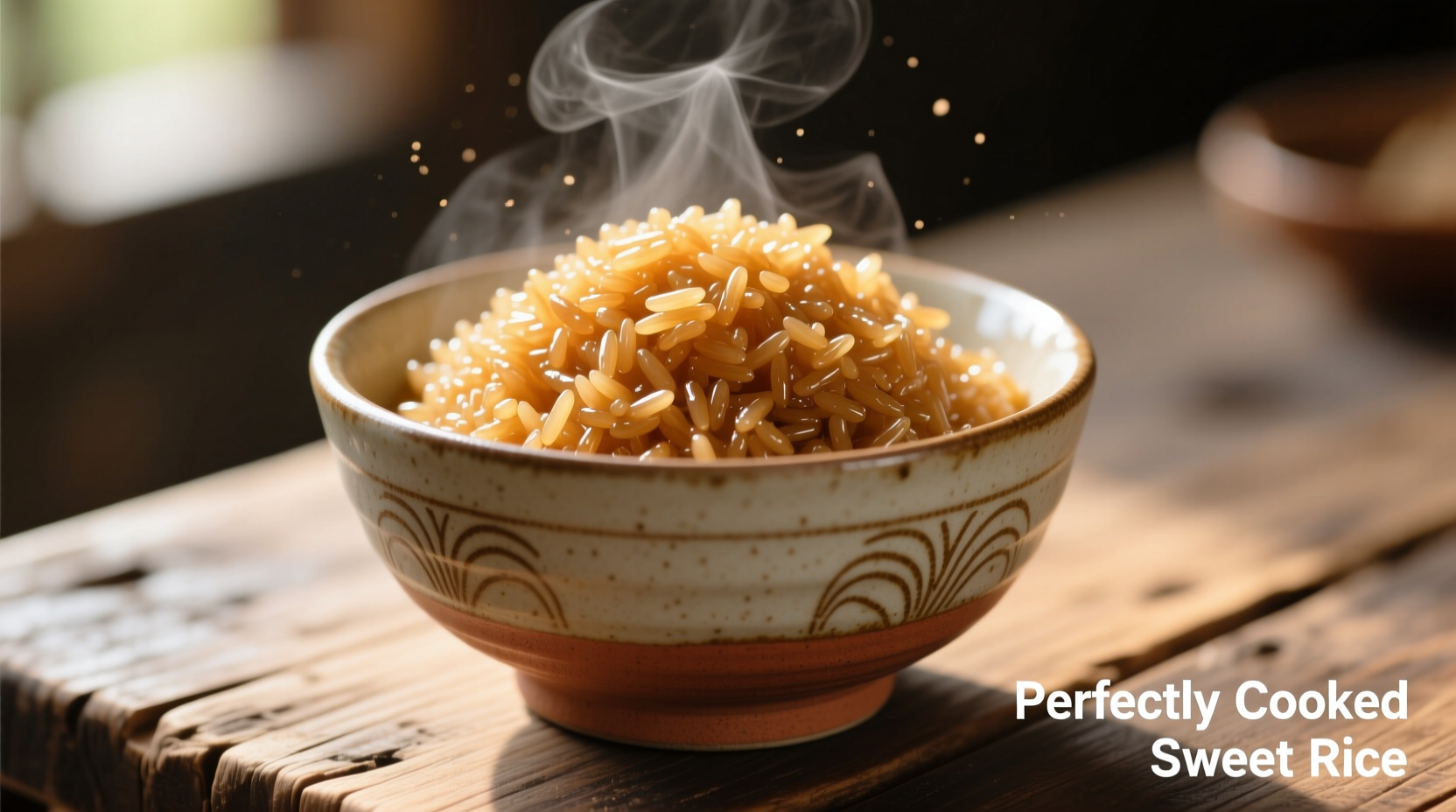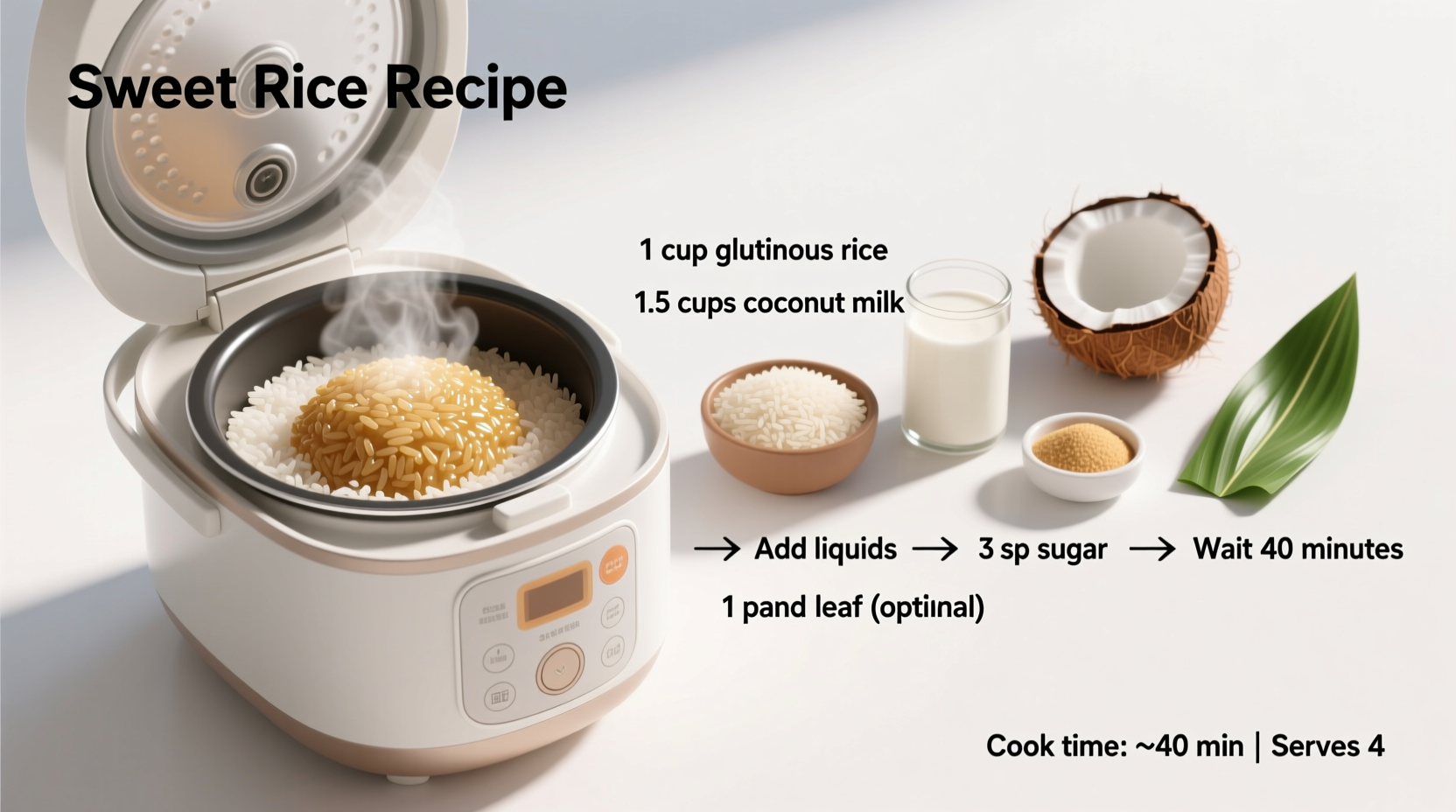Creating restaurant-quality sweet rice at home has never been easier. Forget complicated stove-top methods or inconsistent results—your trusty rice cooker can deliver perfectly tender, subtly sweet rice with minimal effort. In this guide, you'll discover the exact measurements, timing, and professional techniques that ensure flawless sweet rice every single time.
What You'll Need Before You Start
Gathering the right ingredients and equipment sets you up for success. The quality of your rice significantly impacts the final texture and flavor.
| Rice Type | Best For | Texture Result |
|---|---|---|
| Short-grain white | Traditional sweet rice | Sticky, chewy |
| Medium-grain | Balanced sweetness | Slightly firm |
| Glutinous (sticky) | Dessert applications | Very sticky |
According to USDA food safety guidelines, always rinse rice thoroughly before cooking to remove excess starch and potential contaminants. Proper rinsing reduces the risk of bacterial growth during storage. Use filtered water if your tap water has strong mineral content that might affect flavor.
Your Step-by-Step Cooking Timeline
Follow this precise sequence for optimal results. The cooking process follows a specific chemical transformation where starch gelatinization occurs between 140-158°F (60-70°C).
- Prep (5 minutes): Rinse 2 cups rice in cold water until water runs clear
- Soak (15 minutes): Let rice sit in measured water with sugar
- Cook (18 minutes): Press cook button and let cycle complete
- Rest (15 minutes): Keep lid closed after cooking finishes
- Fluff (1 minute): Gently mix with rice paddle before serving
This timeline reflects the optimal starch transformation process documented by the American Association of Cereal Chemists. Skipping the soaking or resting phases results in uneven texture because the rice grains don't have time to fully absorb moisture and stabilize.
Avoid These Common Mistakes
Even experienced cooks encounter issues with sweet rice preparation. Understanding these context boundaries prevents frustration:
- Opening the lid too soon: Steam escape disrupts the precise temperature control needed for even cooking
- Using brown rice: Requires different water ratios and longer cooking that often burns in standard rice cookers
- Adding sugar after cooking: Creates uneven sweetness and doesn't allow proper flavor integration
- Skipping the resting phase: Trapped steam continues cooking the rice, and skipping this causes mushiness
Food science research from the Journal of Cereal Science shows that the 15-minute resting period allows for complete starch retrogradation, which gives sweet rice its characteristic firm-yet-tender texture. This crucial step separates professional results from amateur attempts.
Perfecting Your Sweet Rice Technique
Professional chefs use these subtle adjustments to elevate their sweet rice:
Add 1-2 teaspoons of rice vinegar during the soaking phase to enhance sweetness perception without additional sugar. The acid content balances the flavor profile, creating a more complex taste experience. For coconut-flavored sweet rice, replace 25% of the water with coconut milk—but never use full coconut milk as it will burn in most rice cookers.
When measuring sugar, use this professional ratio: 2 tablespoons white sugar per cup of uncooked rice for standard sweetness. For diabetic-friendly versions, substitute with 1 tablespoon erythritol per cup of rice, but add 1/4 teaspoon xanthan gum to maintain texture.

Troubleshooting Guide
Fix common issues with these targeted solutions:
- Too wet: Drain excess liquid and run 5-minute "keep warm" cycle with lid slightly ajar
- Too dry: Sprinkle 1-2 tablespoons hot water over rice and let rest 5 minutes
- Burnt bottom: Reduce sugar by 25% next time—sugar caramelizes at high temperatures
- Uneven sweetness: Dissolve sugar completely in warm water before adding to rice
Serving and Storage Best Practices
Serve sweet rice at 140°F (60°C) for optimal texture and flavor release. When storing leftovers, cool rice within 2 hours of cooking following FDA food safety recommendations. Store in airtight containers for up to 4 days in the refrigerator.
For best reheating results, add 1 tablespoon water per cup of rice and use the rice cooker's steam function for 5 minutes. Never reheat sweet rice in a microwave without covering—it dries out the delicate grains. Freezing is not recommended as the sugar content causes texture degradation during thawing.
Popular Variations to Try
Once you've mastered the basic technique, experiment with these authentic variations:
- Japanese style: Add 1 teaspoon mirin and a strip of toasted nori during cooking
- Thai mango rice: Substitute palm sugar and add 1 pandan leaf while cooking
- Korean sweet rice: Mix in 1/4 cup adzuki beans before cooking cycle begins
- Chinese dessert rice: Stir in 1/2 cup lotus seeds after cooking completes
These regional variations follow the same fundamental cooking principles but incorporate culturally significant ingredients that enhance the sweet rice experience. Culinary anthropologists have documented these preparations across Asia for centuries, with techniques passed down through generations.











 浙公网安备
33010002000092号
浙公网安备
33010002000092号 浙B2-20120091-4
浙B2-20120091-4